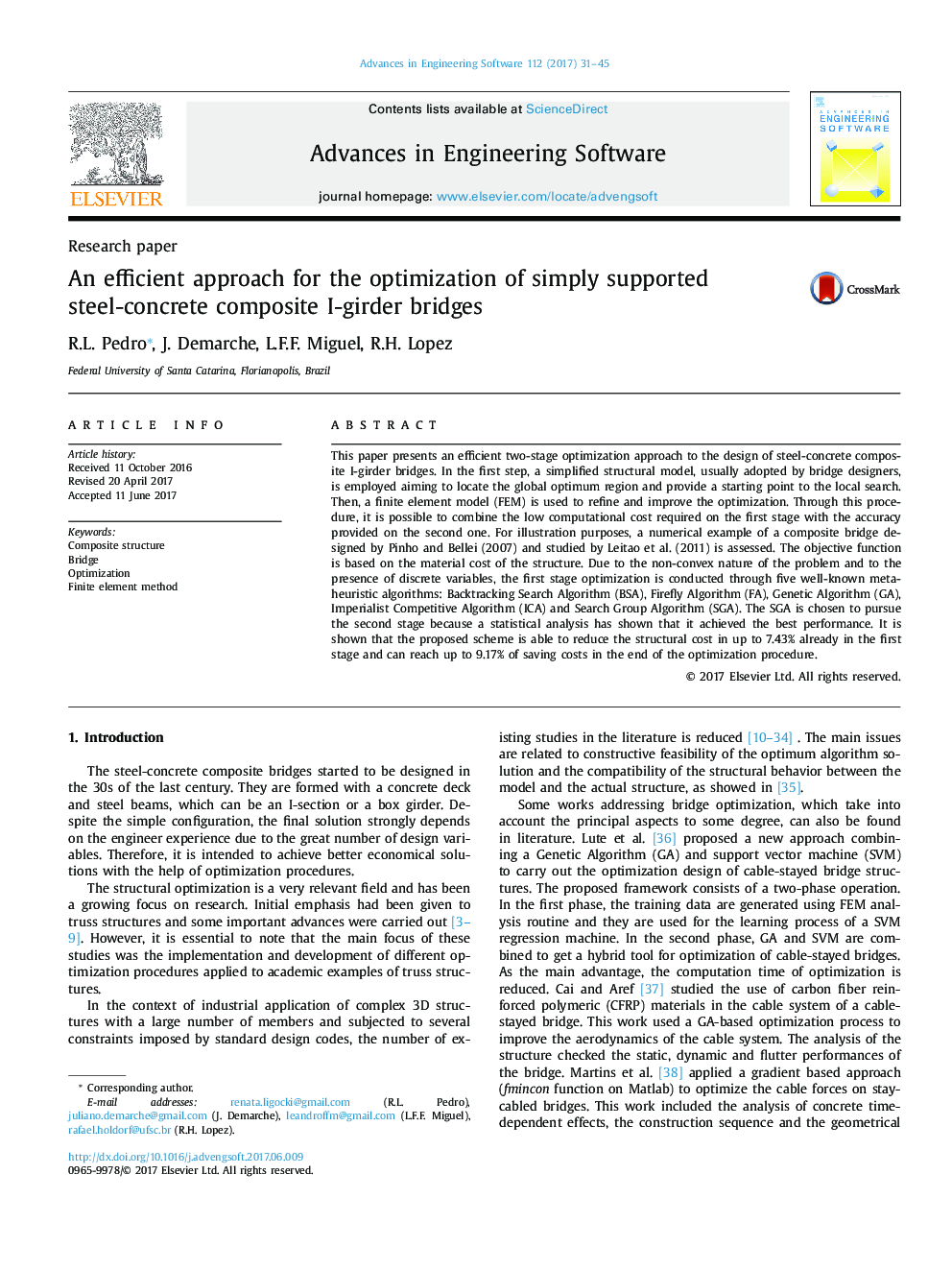| Article ID | Journal | Published Year | Pages | File Type |
|---|---|---|---|---|
| 4977899 | Advances in Engineering Software | 2017 | 15 Pages |
Abstract
This paper presents an efficient two-stage optimization approach to the design of steel-concrete composite I-girder bridges. In the first step, a simplified structural model, usually adopted by bridge designers, is employed aiming to locate the global optimum region and provide a starting point to the local search. Then, a finite element model (FEM) is used to refine and improve the optimization. Through this procedure, it is possible to combine the low computational cost required on the first stage with the accuracy provided on the second one. For illustration purposes, a numerical example of a composite bridge designed by Pinho and Bellei (2007) and studied by Leitao et al. (2011) is assessed. The objective function is based on the material cost of the structure. Due to the non-convex nature of the problem and to the presence of discrete variables, the first stage optimization is conducted through five well-known meta-heuristic algorithms: Backtracking Search Algorithm (BSA), Firefly Algorithm (FA), Genetic Algorithm (GA), Imperialist Competitive Algorithm (ICA) and Search Group Algorithm (SGA). The SGA is chosen to pursue the second stage because a statistical analysis has shown that it achieved the best performance. It is shown that the proposed scheme is able to reduce the structural cost in up to 7.43% already in the first stage and can reach up to 9.17% of saving costs in the end of the optimization procedure.
Related Topics
Physical Sciences and Engineering
Computer Science
Software
Authors
R.L. Pedro, J. Demarche, L.F.F. Miguel, R.H. Lopez,
